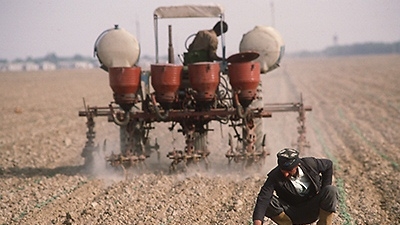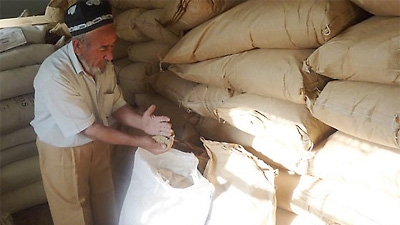Challenge
Tajikistan was suffering from multiple stresses that were compounded by the global food crisis. The extremely harsh winter of 2007–08, combined with power shortages and high energy prices, imposed great hardship on the population, particularly in rural areas, and the sharply rising imported food prices exacerbated the difficulties. The country also faced a locust infestation on top of the food shortages and high food prices. A UN Flash Appeal was conducted to address the humanitarian emergency, including the food crisis, following the severe winter. The Food and Agriculture Organization (FAO), the World Food Programme (WFP), and the United Nations Children’s Fund (UNICEF) also conducted a needs assessment and identified urgent priorities, including the need to: i) combat nutrition deficits, particularly among children and ii) provide agricultural inputs to the country’s most needy and vulnerable.
Solution
The Emergency Food Security and Seed Import Project (EFSSIP) has been designed to increase food production and diversification in the short to medium term by improving the ability of the poorest farmers of the Khatlon region to deal with the seed shortage. The project supports improvements in farmer access to the necessary inputs and technology through the establishment of CPGs, using newly created revolving seed funds, and the launch of a network of private dealers, with the formation of a temporary revolving fund to import fertilizers for non-cotton crops to be channeled through merchants.
Results
- With the additional financing, the project has gone beyond providing emergency farm aid and promoted private farming by empowering more than 20,500 mostly rural households (about 147,600 beneficiaries, 75 percent women-headed) to achieve food security. Key outcomes include:
- establishment of 1,280 CPGs (840 for crops and 440 for livestock) using community seed funds that help overcome the quality planting seeds shortage (mid-2011–2012);
- 100 percent of established CPGs were able to repay the required amount of seeds by mid-2012;
- CPG yields have generally been higher than the national averages. For example, in 2012, wheat averaged 4.7 t/ha (tons per hectare) compared with the regional average of 2.8 t/ha, maize yielded 5.0 t/ha compared with 3.9 t/ha, and potatoes 26.2 t/ha compared with 17.8 t/ha (fall 2012);
- roughly 59,000 chicken, over 1 million eggs, and more than 6,400 rabbits were produced in fall 2012;
- average additional net income per CPG beneficiary was around 565 Tajik Somoni (TJS) in 2011 for both crop and livestock groups, and TJS2,112 from the crop groups in 2012. These amounts far exceed the average income of TJS87 per month before the project;
- establishment of a fertilizer supply network is underway.
Bank Group Contribution
In 2008, the International Development Association (IDA) provided support from the Global Food Crisis Response Program Trust Fund for Food Crisis Response (TF FCR) in the amount of US$5 million to the parent project as an emergency operation to supply agricultural inputs to Tajikistan’s most needy and vulnerable. Additional financing in the amount of US$6.25 million from the Russia Food Price Crisis Rapid Response Trust Fund was provided in 2010 to further support the program and expand its scope.





